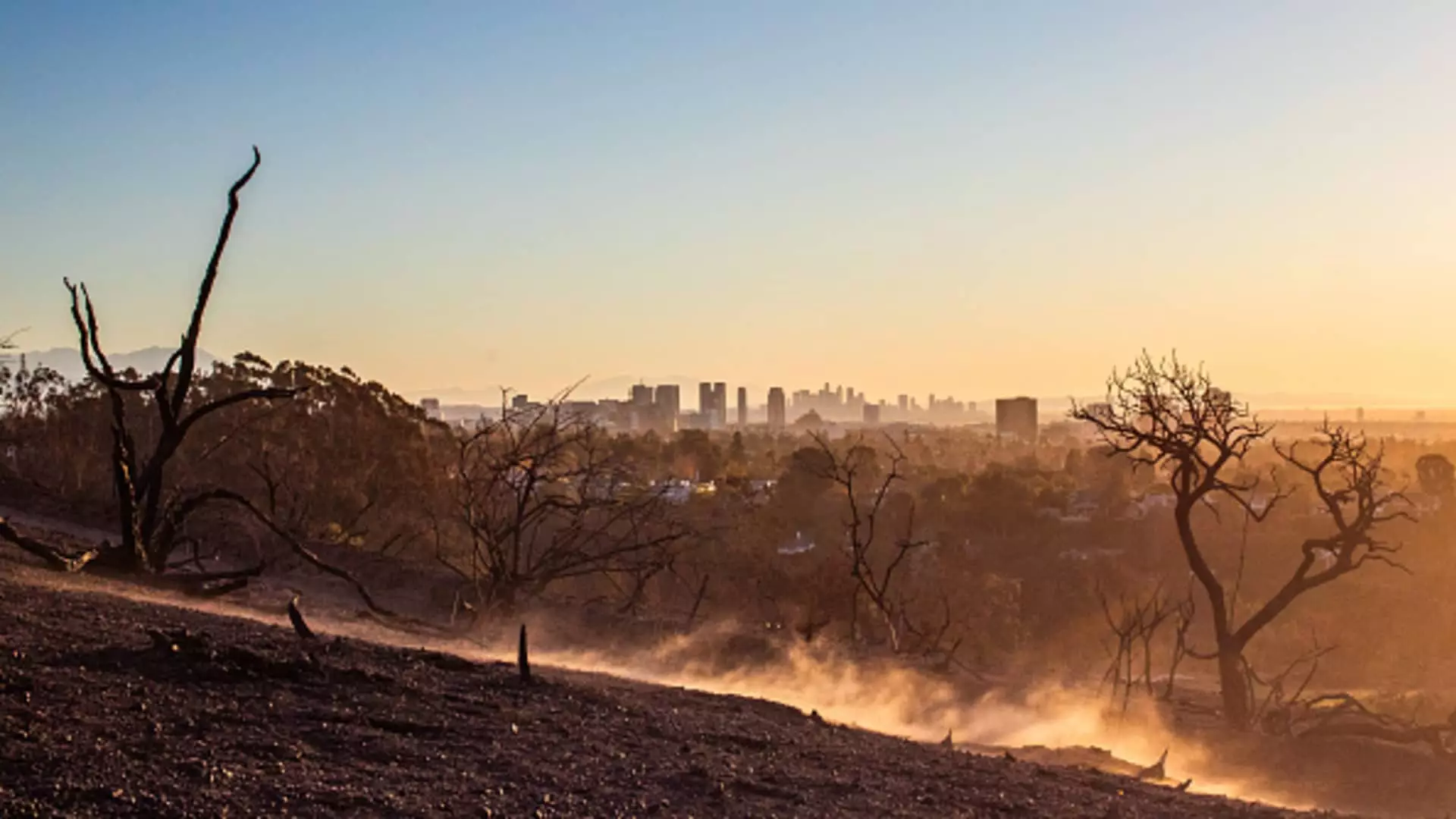In recent years, the insurance industry has faced an unprecedented wave of challenges, resulting in soaring premiums and heightened scrutiny from homeowners across the United States. This trend has only intensified in the aftermath of various natural disasters, particularly the catastrophic wildfires in Los Angeles that analysts predict could incur losses exceeding $20 billion. Such estimations from financial powerhouses like JPMorgan and Wells Fargo underscore a grim reality: the trajectory of homeowners’ insurance costs is on a steep incline, and Californians are bracing for significant increases.
Moreover, the recent trends in natural disasters directly correlate with rising insurance premiums. A staggering number of homes sit at risk of extreme damage from environmental threats, with nearly half of all U.S. homes falling into this category. Adding to this burden is the scarcity of affordable insurance options coupled with a regulatory landscape that appears unable to keep pace with escalating risks. The pressing query: what does this mean for the average homeowner?
For California residents, especially, the recent wildfires have profound implications for future insurance costs. The California Department of Insurance has recently adjusted regulations, allowing for increased premiums in high-risk areas in exchange for improved coverage. This regulatory shift has led to early reports of insurance companies raising rates as much as 34%. Such changes hint at a broader, more unsettling pattern: as the frequency and severity of natural disasters escalate, insurers will likely adjust their pricing strategies to reflect the financial realities they face after catastrophic events.
Specifically, a single wildfire claim could cause premiums to increase by nearly 30%, and two claims might double that figure, according to recent analyses. This cascading effect of natural disasters threatens property values and exposes homeowners to significant financial vulnerabilities, a concern echoed by Janet Ruiz of the Insurance Information Institute. As insurers scramble to balance their books post-disaster, homeowners everywhere, even those outside California, may soon feel the impacts of these rising costs.
While California remains the epicenter of this pricing crisis, the winds of change in insurance rates are blowing nationwide. Homeowners in less-regulated states are beginning to feel the sting of higher premiums as insurers seek to cover losses incurred elsewhere. Research indicates a growing disconnect between the risks faced in various regions and the insurance rates applied to homeowners, highlighting a pervasive issue within the regulatory framework.
Experts assert that while premiums in one state may not directly influence those in another due to state-specific regulations, the overarching trends of natural disasters will ultimately lead to higher insurance premiums across the board. “Many insurance companies operate nationwide, or at least in multiple states,” states Holden Lewis, a mortgage expert. Consequently, insurers will leverage their operations in looser-regulated states to compensate for losses incurred in areas suffering from more frequent calamities.
As the landscape of climate-related risks continues to evolve, homeowners must grapple with the reality that their insurance coverage may no longer suffice. The costs associated with rebuilding have skyrocketed, with average rebuilding costs inflating from as low as $166 per square foot to over $300, exacerbating the underinsurance crisis. A stark reminder emerges: many homeowners might renew their policies without reassessing their coverage, leaving them vulnerable to substantial losses.
Experts urge homeowners to take proactive measures in understanding their coverage needs, particularly in light of increased natural disaster risks. Conducting a thorough evaluation of how much it would cost to rebuild their home is imperative, yet many remain oblivious or apathetic to this crucial aspect. Moreover, the Consumer Financial Protection Bureau has raised alarms over the lack of flood insurance among homeowners, emphasizing that standard policies often omit such coverage, necessitating separate flood insurance.
In this volatile insurance landscape marked by rising premiums and escalating risks, homeowners must seize control of their insurance needs. Regularly updating coverage amounts and consulting professionals to ascertain the current reconstruction costs are essential steps. Moreover, obtaining flood insurance, particularly in light of climate change-induced weather fluctuations, is crucial.
The financial ramifications of natural disasters cannot be overstated, and as they become more frequent, homeowners nationwide must brace themselves for the fallout. As the year progresses, it becomes increasingly critical to stay informed and prepared, ensuring that one’s insurance policies align with the realities of environmental threats. Ultimately, the onus is on homeowners to navigate these challenges with vigilance and foresight, safeguarding their most valuable assets amid a landscape increasingly fraught with uncertainty.

